From inside (document excerpt):
58BLA Low-Boy Oil-Fired Furnace Visit www.carrier.com Installation, Start-Up, and Operating Instructions For Sizes 105–155, Series 111 NOTE: Read the entire instruction manual before starting the installation. This symbol indicates a change since the last issue. Index Page SAFETY CONSIDERATIONS 1-2 Minimum Clearance to Combustibles 2 INTRODUCTION 2 LOCATION 2-4 Air for Combustion and Ventilation .2-3 Duct Work Recommendations 3-4 VENTING INSTRUCTIONS 4 Pre-Installation Vent System Inspection 4 Masonry Chimney .4 Factory-Built Chimneys 4 Horizontal Venting 4 OIL BURNER 4 OIL CONNECTIONS .4-5 BAROMETRIC DRAFT CONTROL .5 ELECTRICAL 5 FILTERS 5 OPERATIONAL CHECKOUT 5-6 Start-Up .5 Recommended Installation Practices and Combustion Check .5-6 Fan Adjustment Check .6 Limit Control Check .6 For Year-Round Air Conditioning .6 Heating 6 Cooling 6 Constant Blower Switch .6 MAINTENANCE 6-11 General .6-7 Oil Burner .7 Heat Exchanger and Flue Pipe 7-8 Blower Oiling and Removal .8 Keeping Filters Clean .8 Airflow Data .9 Dimensional Drawing .9 Barometric Damper Locations 10 Wiring Diagram 11 USER’S INFORMATION .12 Here’s How Your Heating System Works 12 Preparing Your Furnace For Operation .12 Lighting Your Furnace .12 Turning Off Your Furnace .12 SAFETY CONSIDERATIONS FOR YOUR SAFETY DO NOT STORE OR USE GASOLINE OR OTHER FLAMMABLE VAPORS AND LIQUIDS IN THE VICINITY OF THIS OR ANY OTHER APPLIANCE.
DO NOT ATTEMPT TO START THE BURNER WHEN EXCESS OIL HAS ACCUMULATED, WHEN THE FURNACE IS FULL OF VAPOR, OR WHEN THE COMBUSTION CHAMBER IS VERY HOT. For use with grade 2 Fuel Oil maximum. Do not use Gasoline, Crankcase Oil, or any Oil containing Gasoline! Failure to follow this warning could lead to sooting, fire, explosion, and/or severe bodily harm. Never burn garbage or paper in the heating system and never leave rags, paper, or any flammable items around the unit. These instructions are intended to be used by qualified personnel who have been trained in installing this type of furnace. Installation of this furnace by an unqualified person may lead to equipment damage and/or a hazardous condition which may lead to bodily harm. All local and national code requirements governing installation of oil burning equipment, wiring, and flue connections must be followed. Some of the codes (issued by the Canadian Standards Association, the National Fire Protection Agency, and/or the American National Standards Institute) that may be applicable are: ANSI/NFPA 31 ANSI/NFPA 211 INSTALLATION OF OIL BURNING EQUIPMENT CHIMNEYS, FIREPLACES, VENTS, AND SOLID FUEL BURNING APPLIANCES WARM AIR HEATING AND AIR CONDITIONING SYSTEMS NATIONAL ELECTRICAL CODE INSTALLATION CODE FOR OIL BURNING EQUIPMENT CANADIAN ELECTRICAL CODE ANSI/NFPA 90B ANSI/NFPA 70 CSA B139 CSA C22.1 Manufacturer reserves the right to discontinue, or change at any time, specifications or designs without notice and without incurring obligations. Book 1 4 PC 101 Catalog No. 565-861 Printed in U.S.A. Form 58BLA-3SI Pg 1 8-96 Replaces: 58BLA-2SI Tab 6a 8a Only the latest issues of above codes should be used, and are available from either The National Fire Protection Agency, Batterymarch Park, Quincy, MA 02269 or The Canadian Standards Association, 178 Rexdale Blvd., Rexdale, Ontario M9W 1R3 Recognize safety information. This is the safety-alert symbol. When you see this symbol on the furnace and in instructions or manuals, be alert to the potential for personal injury. Understand the signal words DANGER, WARNING, and CAUTION. These words are used with the safety-alert symbol. DANGER identifies the most serious hazards which will result in severe personal injury or death. WARNING signifies a hazard which could result in personal injury or death. CAUTION is used to identify unsafe practices which would result in minor personal injury or product and property damage.


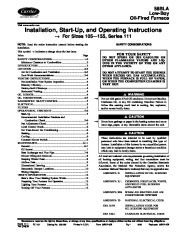 Carrier Owners Manual - Enlarge page 1 of 12
Carrier Owners Manual - Enlarge page 1 of 12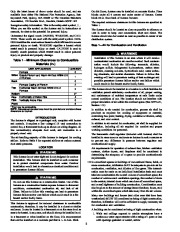 2 of 12
2 of 12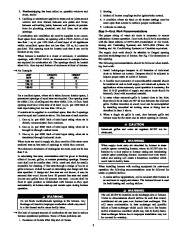 3 of 12
3 of 12 4 of 12
4 of 12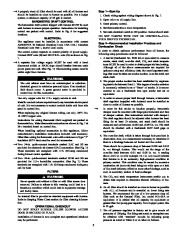 5 of 12
5 of 12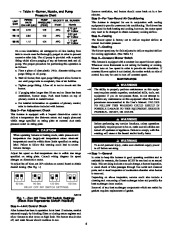 6 of 12
6 of 12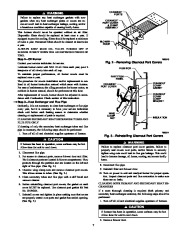 7 of 12
7 of 12 8 of 12
8 of 12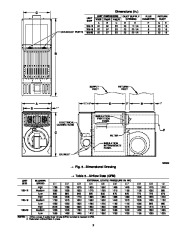 9 of 12
9 of 12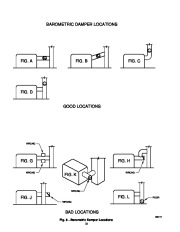 10 of 12
10 of 12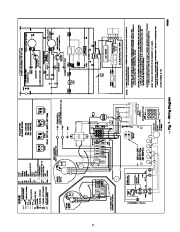 11 of 12
11 of 12 12 of 12
12 of 12